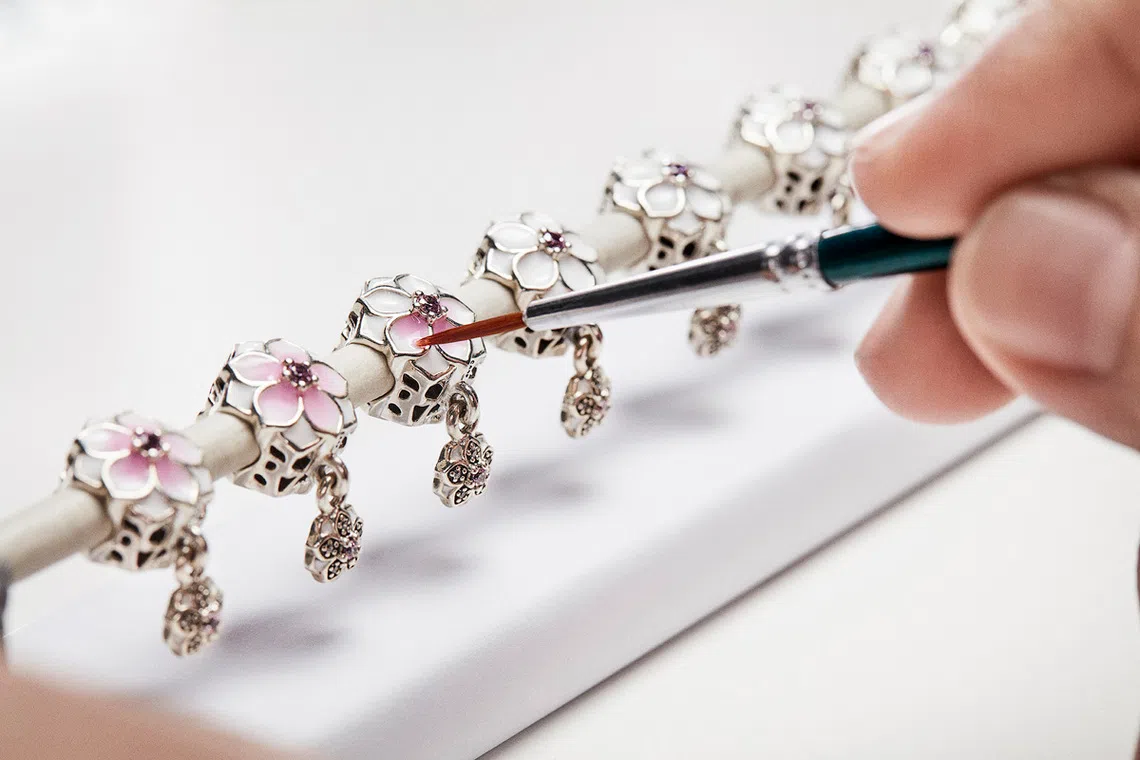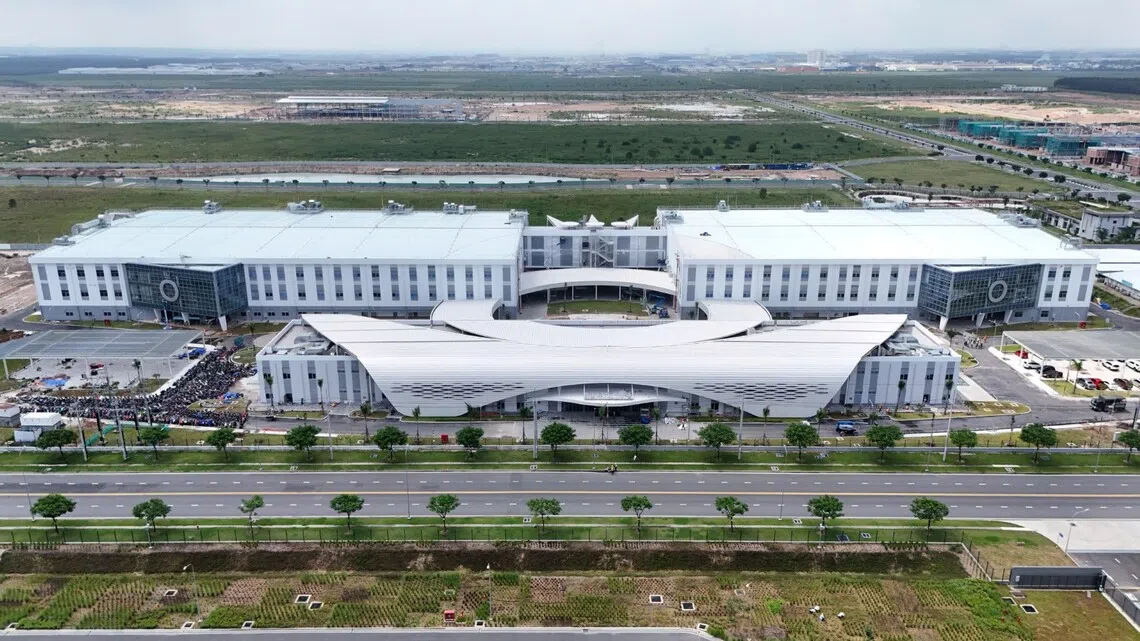Pandora crowns Singapore as its new Asia base, starting with 50 new hires
The jeweller’s 8,600 sq ft office in Asia Square Tower 1 will open in a few months

[SINGAPORE] Pandora, the world’s largest jewellery brand, is opening a new regional headquarters in Singapore as part of its push to power its growth in Asia – and it is making its debut with “bold” hiring plans for a 50-strong team for a start.
In an interview with The Business Times ahead of the announcement on Tuesday (Nov 11), its chief commercial officer Massimo Basei attributed the decision to Singapore’s vibrant business environment, dynamic economy and strategic location.
“It’s perfectly located in the heart of Asia, and it allows us to provide the right levels of support to (markets) from Japan and South Korea to India and South-east Asia,” he explained.
The lease for its new Marina Bay office has been signed and the 8,600 square feet space in Asia Square Tower 1 will open in a few months’ time, added Basei.
Access to top talent is another key consideration for Pandora.
The jeweller intends to hire around 50 new employees – mostly from Singapore – across branding and marketing, market development and operations roles, with recruitment expected to begin in the coming months.
Asia footprint
The new headquarters will serve as the central hub for the jeweller’s Asia cluster, overseeing both owned-and-operated stores as well as distributor markets across the region, said the Danish company.
Asia – home to some of the largest jewellery markets in the world – is an under-represented region for Pandora, said Basei, noting that its market share here is much lower than that in the rest of the world.
“It’s not that we have not been present in Asia so far, but now we really want to elevate our focus in this region,” he continued.

Basei added that Pandora’s organic revenue from Asia-Pacific grew 5 per cent year on year in the third quarter of this year, and that the jeweller expects growth to accelerate as it deepens investment in the region.
Pandora’s largest market is the US, which accounted for 32 per cent or almost a third of its revenue in the first nine months of 2025.
Other key countries include the UK (11 per cent), Italy (7 per cent), Germany (7 per cent), France (4 per cent), Australia (3 per cent) and China (1 per cent). Its remaining markets contributed some 35 per cent of its topline in the same time period according to its third-quarter financial statement.
Basei told BT that Pandora’s Asian operations were previously managed out of Australia. The way the company managed its Asia operations in the past “mirrors the fact we did not yet have a strong focus”, he pointed out. “(But) Asia should actually be one of our future growth engines.”
Pandora in 2020 announced a restructuring of its business into 10 clusters across the three regions of Americas, Asia-Pacific as well as Europe, the Middle East and Africa.
The Asia-Pacific region was initially divided into three clusters: China, Pacific and Rest-of-Asia. Pandora later folded Singapore, Japan and 11 other distributor markets throughout South-east Asia and South Korea into its Pacific cluster from 2022.
Meanwhile, sluggish sales in China have seen the jeweller retreating from the world’s second-largest economy.
In its second-quarter financial report released on Aug 15, Pandora increased its expected store closures in China from at least 50 to at most 100.
It has shuttered 59 concept stores in China in the year to date, with 37 closures in the third quarter and 12 in Q2.
Basei noted that although Pandora is the world’s largest jewellery brand today – it sells more pieces of jewellery than any other company in the world – it holds a relatively low market share worldwide. Most of the jewellery market globally is not branded.
In their 2018 annual report, Pandora noted that the 10 largest players only make up 12 per cent of the global market, and only 20 per cent of the jewellery market is branded.
“This suggests how fragmented the jewellery market is, unlike other industries, so we believe we have huge opportunities to increase our market share globally,” he said.
Made in Asean
All of Pandora’s jewellery has so far been produced out of its three crafting facilities in Thailand’s Bangkok and Lamphun.
But, in May last year, it broke ground on a new US$150 million facility in Vietnam that has since completed construction. Located in Binh Duong Province, about 40 km north of Ho Chi Minh City, production is said to begin next year.

The first batch of employees has officially moved in, said the company in its third-quarter interim report released on Nov 5. Asked about its plans, announced previously, to employ up to 7,000 craftspeople, Basei replied that recruitment was going well, and that training is key.
The new facility is said to boost the company’s crafting capacity by around 50 per cent, producing up to 60 million pieces of jewellery per year. For reference, Pandora produced 113 million pieces of jewellery in 2024.
The Denmark-headquartered jeweller is listed on the Nasdaq Copenhagen stock exchange with a market capitalisation of more than S$12.7 billion as at Tuesday.
Asked if a secondary listing was in the cards, Basei ruled out the possibility.
Dino Tan, Singapore Economic Development Board’s senior vice-president and head of Europe, welcomed Pandora’s decision to leverage the Republic’s position as a business hub for consumer companies looking to expand their regional reach.
Tan said: “Pandora’s expanded presence will add to the vibrancy of global lifestyle and consumer brands in Singapore and create exciting job opportunities for Singaporeans.”
Pandora jewellery is sold in more than 100 countries through 6,800 points of sale, including over 2,700 concept stores. The company crafts its products using only recycled silver and gold, and employs 37,000 people worldwide.
Decoding Asia newsletter: your guide to navigating Asia in a new global order. Sign up here to get Decoding Asia newsletter. Delivered to your inbox. Free.
Copyright SPH Media. All rights reserved.


